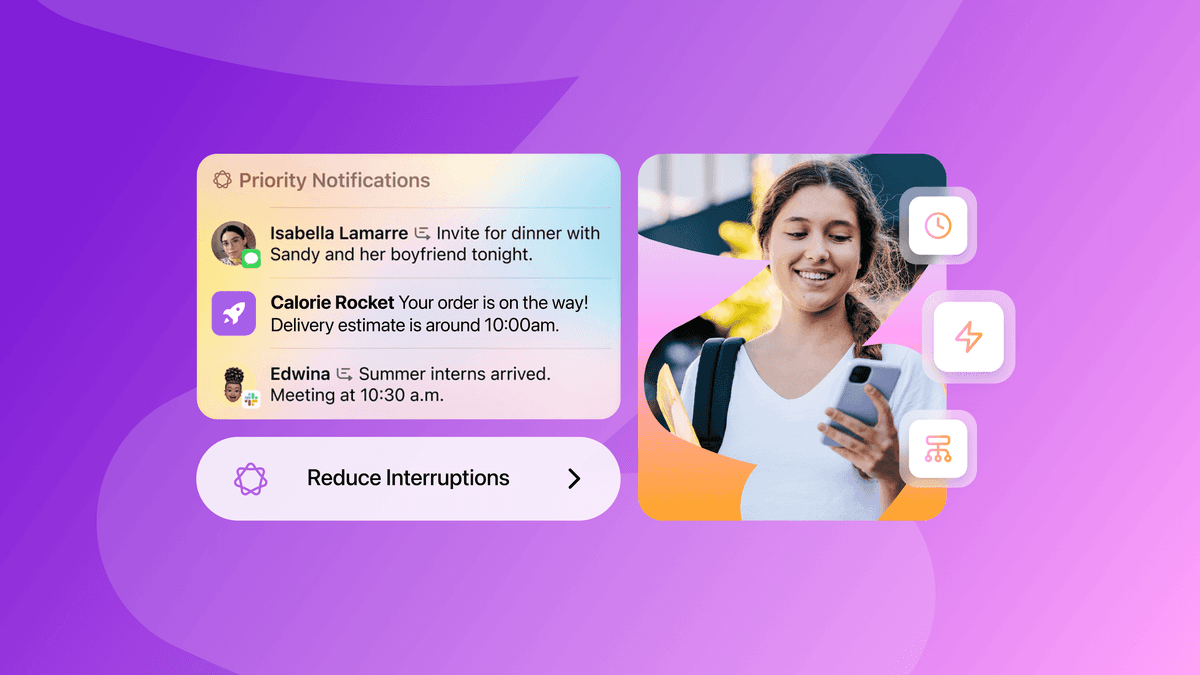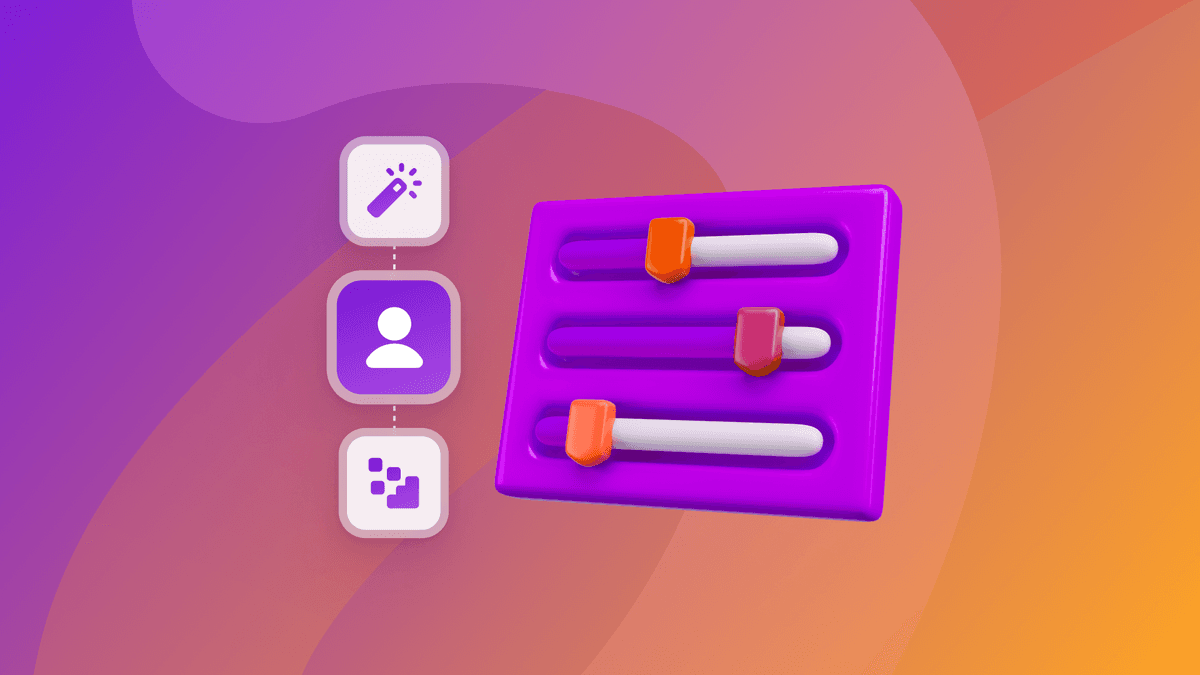How iOS 18 is shaping customer engagement—and what marketers can do about it
Published on May 09, 2025/Last edited on May 09, 2025/5 min read


Haley Trost
Group Product Marketing Manager, BrazeEvery year, Apple introduces changes to its operating system that send ripple effects across the mobile marketing ecosystem. With the release of iOS 18, customer engagement teams are facing one of the most impactful shifts in recent memory, thanks to a slew of AI-driven features and notification controls that are reshaping how, when, and if users engage with the messages they send.
If you’re a mobile marketer wondering what this means for your customer engagement strategies, you’re not alone. We covered the high-level changes in our annual WWDC recap, but with more questions than ever coming from marketing teams, it’s time to go deeper. Let’s break down what’s changed, what we’ve seen so far, and—most importantly—how to future-proof your messaging strategies.
Apple’s Engagement Feedback Loop
At the heart of iOS 18 is a subtle but powerful shift: Apple is creating an engagement feedback loop where the more a user engages with your app, the more likely they are to receive your notifications. The more they see your notifications, the more they engage. It’s a virtuous cycle—if you’re providing consistent, relevant value.
But if your messages aren’t meaningful? They’ll be deprioritized, summarized, or hidden entirely. That’s why it’s no longer enough to send messages—brands now have to earn the right to have their messages seen.
What’s New in iOS 18? A Quick Refresher
Let’s start with a quick recap of some of key notification-related features in iOS 18:
- Priority Notifications: An Apple Intelligence feature that places the most important notifications at the top of the notification stack.
- Reduce Interruptions: A new Focus Mode that only surfaces the notifications that Apple Intelligence considers urgent.
- Notification Summaries: AI-generated summaries that group messages together for quick readability.
- Digest View: A feature in the Apple Mail app that pulls together all relevant emails from a brand into a single digest.
Ultimately, all these changes have a central core purpose: Across the board, Apple is pushing brands to be more customer-centric, more thoughtful, and more relevant in how they engage their users. The brands that succeed will be the ones that best understand their audiences, tailor their outreach effectively, and relentlessly test and refine their approach.
So, what can you do? It’s time to evolve your strategy.
Winning strategies in the age of iOS 18
To respond effectively to these new features, marketers need to lean into customer-centric strategies that prioritize value, relevance, and timing. Here are six proven approaches:
- Ask before you alert. Empower users to tell you what they care about. When customers opt in to receive specific types of content, they’re far more likely to engage—and stay in the feedback loop.
- Create customizable preference centers for topics, frequency, and channels.
- Prompt for preferences contextually (e.g. right after a purchase or during onboarding). In-app messages are a great channel for priming users to opt in to push notifications.
- Update preferences over time as user behaviors evolve.
- Tailor messages to specific segments. Generic blasts won’t cut it on iPhones anymore. Use behavioral data to segment your audience and deliver more personalized, relevant messaging.
- Identify high-intent users (e.g. those who’ve browsed, favorited items, or made purchases).
- Tailor messages by lifecycle stage, loyalty tier, or in-app behavior.
- Trigger messages at high-intent moments. The best messages feel like they were sent just for you, at just the right moment. Real-time delivery increases perceived relevance, which helps with prioritization.
- Trigger push or SMS based on in-the-moment actions, like purchases, product views, and low inventory alerts.
- Use gamification (e.g. “You’re one step away from your reward!”) to drive urgency.
- Use geofencing to trigger alerts when users are in relevant locations, like near a physical storefront.
- Send when users are most engaged. Apple is factoring in user activity when deciding whether to show your message, so you should, too.
- Turn on Intelligent Timing for your campaigns to optimize send times.
- Be clear, concise, and compelling. iOS 18 uses AI to summarize your notifications and evaluate the importance of them. That means clarity isn’t just nice to have—it’s table stakes.
- Use plain language with a clear call to action.
- Test different keywords to see which ones perform best.
- Be direct about time sensitivity, offers, and value.
- Continuously test and optimize your strategy. With Apple’s system constantly adapting, ongoing experimentation is key.
- A/B test message formats, tones, lengths, and interruption levels to find what works—and then keep testing, to make sure you’re aware when things change.
- Test the impact of setting different interruption levels and relevance scores for your push notifications.
- Try more eye-catching message formats like rich push or RCS to more effectively capture recipients’ attention.
Final thoughts: It’s all about the relationship
At its core, iOS 18 reinforces what great marketers already know: The most effective campaigns respect the customer. They offer real value, arrive at the right moment, and are tailored to individual needs.
Your push and SMS messages aren’t just competing with other brands—they’re being judged by an algorithm trained to protect the user experience. To earn your place on the lock screen, you need to be indispensable.
And that starts by building a better relationship—one message at a time.
Check out our 2025 Global Customer Engagement Review.
Related Tags
Be Absolutely Engaging.™
Sign up for regular updates from Braze.
Related Content
View the Blog
How behavioral marketing turns data into personalized experiences

Team Braze

Experience optimization: Turning data insights into better journeys

Team Braze

December 2025 Bonfire Marketer of the Month: Jagex’s Emma Oliver
